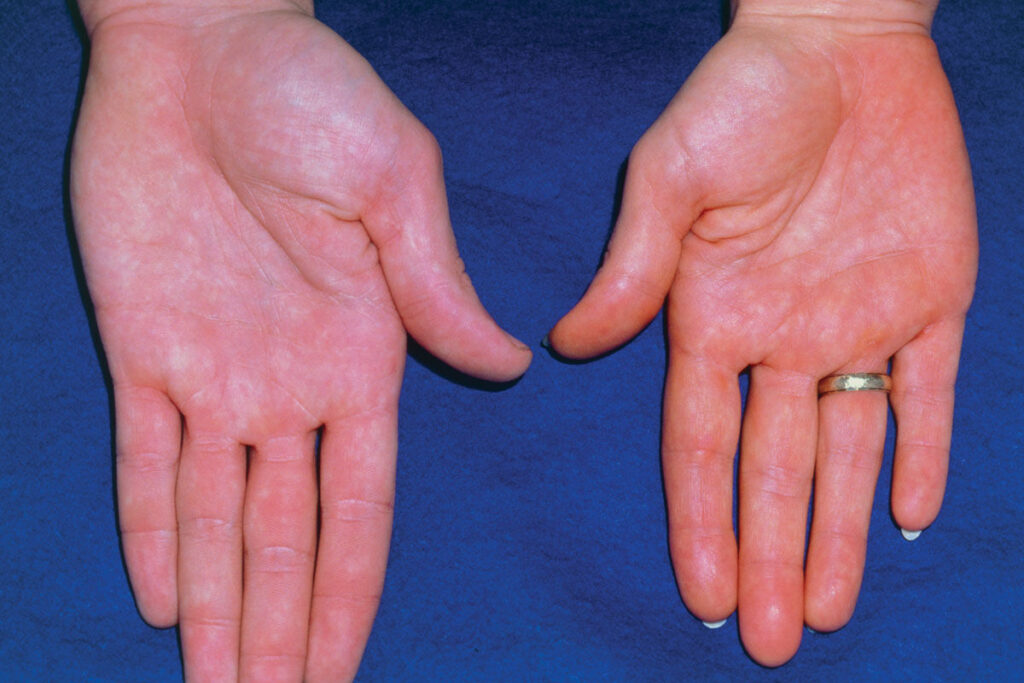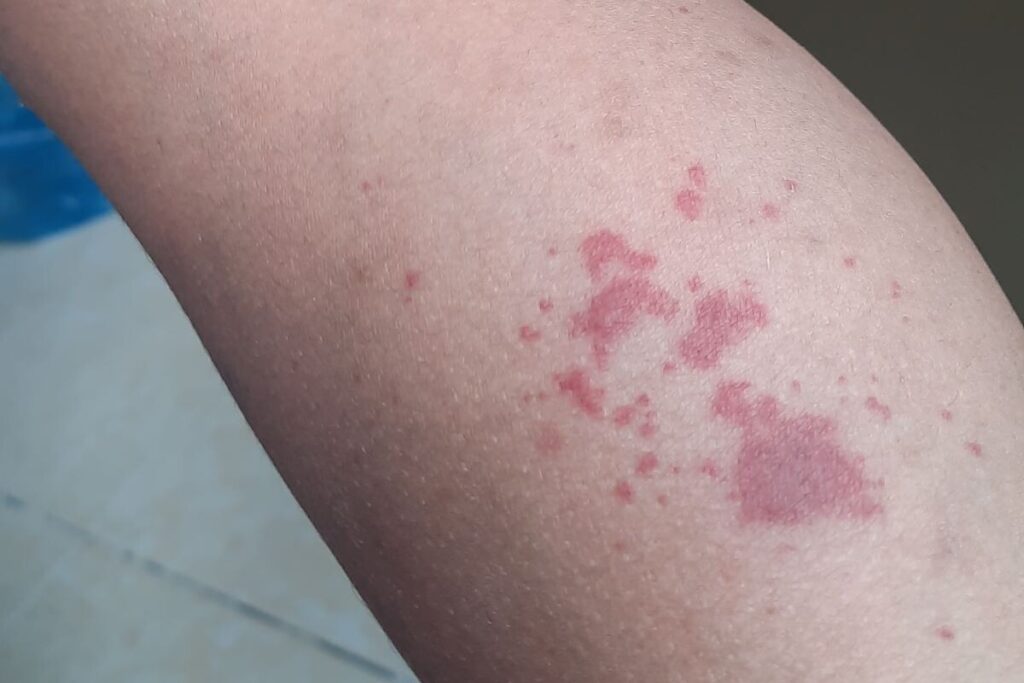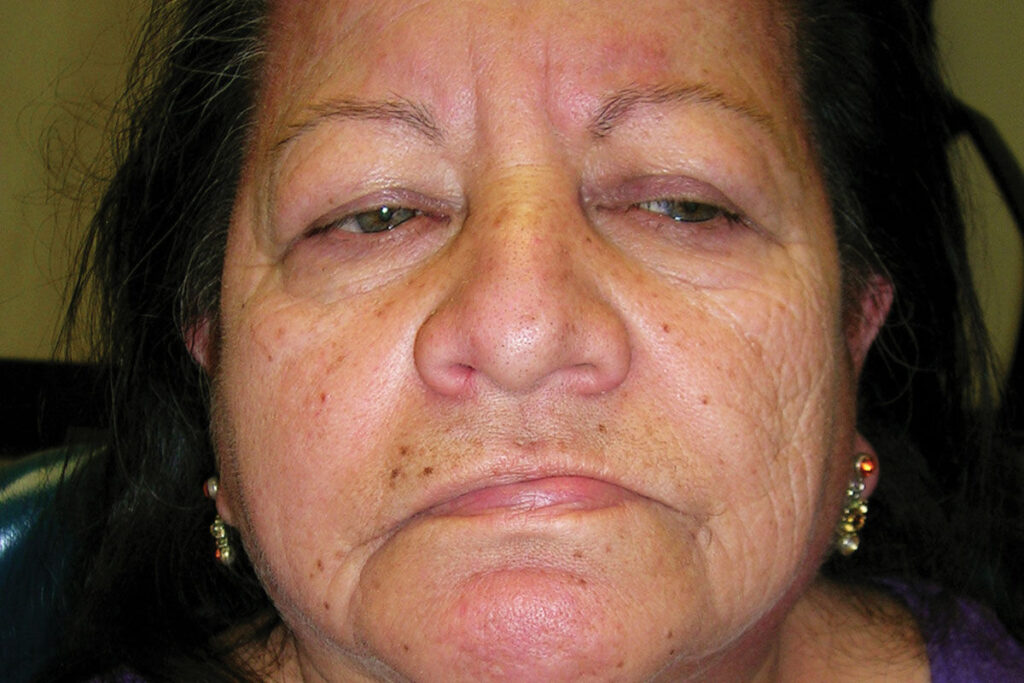What do these presentations – involving yellow pigmentation on the hands, a non-blanching rash on a child’s legs, and a facial rash accompanied by muscle weakness – add up to?
CASE EASY
The patient
A 34-year-old lady with no relevant history on no medication except for the combined contraceptive pill.
She says
‘My friend thinks I’m jaundiced. Her dad had pancreatic cancer so she’s worried. I’ve noticed it in my hands mainly, some days worse than others. I feel fine. In fact I’ve been trying to improve my lifestyle so I’ve been eating lots of fruit and veg and doing exercise.’
+

=
See end of article for answer
CASE MODERATE
The patient
A nine-year-old boy with no significant history other than eczema. His only medication is as-required emollients and hydrocortisone 1% ointment. No recent oral medication.
His mother says
‘I’m worried he has meningitis. He’s got a rash on his legs that doesn’t go away when I do the glass test. He had a sore throat a few days ago and the rash started yesterday and he has tummy ache.’
+

=
See end of article for answer
CASE HARD
The patient
A 62-year-old lady with a history of hypertension and OA, taking perindopril 4mg per day and paracetamol as needed. No recent medication.
She says
‘I’m feeling so old. My shoulders, arms and legs are stiff and sore. My hips are too, so I struggle to get out of my chair. Now I’ve got a rash on my face and chest. Upping my paracetamol hasn’t helped and it doesn’t feel like my arthritis.‘
+

=
See end of article for answer
Dr Keith Hopcroft is Pulse’s medical adviser and a GP in Basildon, Essex
Answers
EASY Carotenaemia This results from an excess of beta-carotene in the blood, leading to yellow/orange pigmentation, initially on the hands, feet and nasolabial area, though it can become extensive. It results from the ingestion of carotene-rich foods such as a carrots and sweet potatoes, and drinks such as orange juice. It is harmless, and can be confused with jaundice but the sclera remain normal.
MODERATE Henoch Schonlein purpura This is a rare vasculitis seen in children usually aged between three and eight. The cause is unknown, but it may follow an infection. The rash is purpuric and develops over a day or so, mainly on the extensor surfaces of the legs and buttocks. There may be abdominal pain, arthralgia and nephritis. It is self-limiting but is likely to require hospital assessment.
HARD Dermatomyositis This rare condition causes muscular inflammation associated with skin changes – classically the ‘heliotrope’ rash casing discolouration of the eyelids and periorbital oedema. The patient may suffer systemic symptoms, too, such as general malaise and weight loss. Creatine kinase is likely to be high, but muscle biopsy may be needed to confirm the diagnosis.
Please note – these are all fictional cases and not based on any real patient interactions
Pulse October survey
Take our July 2025 survey to potentially win £1.000 worth of tokens













